Recovery tools, part 2
Books and contraptions
Welcome to The Tonic, a light-hearted, heavily resourced newsletter for folks interested in learning about long COVID, ME/CFS, and other chronic illnesses. Come for the info; stay for the whimsy. Or vice versa.
I will generally post once a week on Saturdays or Sundays: a narrative post when my energy allows and resource roundups (known here as The Antidote) at all other times. Occasionally I post more than once a week, usually to announce an event or to push brief, timely info out to you sooner.
Wish list shout out!
Who doesn’t love gifts? Many of my readers have chosen to support my efforts here via the Amazon wish list in lieu of paid subscriptions (which could jeopardize my disability benefits). A big Tonic THANK YOU this week goes to Shayne C.
If anyone is interested in showing support for The Tonic, see below for the info. There’s something for every budget and any help is appreciated. (Note: please be sure to include a note with your gift(s) so I can include you in the shout out!)
The Tonic is free to read - Amy is so happy you’re here! There is no paid subscription option here like with other Substack newsletters. However, if you are valuing the experience and are able, please consider a show of support by sending a gift of health, wellness, or joy from this Amazon wish list. Anyone who does gets a 📢 in an upcoming post. Thank you!
U.S. Advocacy alert!
For those with Long COVID, ME/CFS, and other post-viral illnesses living in the U.S., there is a short window of time to contact your congress folk and urge them to include research and education funding in the FY25 federal appropriations. Go to the Long COVID Moonshot website and scroll down for all the tools you need to call and write your legislators. Remember: they work for YOU and it is your right to be heard!
I’m truckin’ along here
Well friends, I am almost afraid to put this out into the universe, but I have been feeling pretty decent these last couple of weeks - back to my pre-Zira’s surgery baseline, for sure.
I do not purport to know the secret sauce to this slow-but-sure recovery of mine, but I’ve committed to sharing with you all of the various tools and approaches that I think have had any bit of a positive impact on my mindset, my physical health, or my emotional well-being.
Before I dive into part two of this recovery tools series, I wanted to share part one with you for those who are new here or who may have missed it. Part one (particularly the intro) is important to read because it lays out all of the disclaimers and qualifiers that any person with Long COVID or ME/CFS should present before claiming to have anything resembling answers to these complex chronic illnesses. In fact, I do not claim to have the answers. I only share what has been helpful and why I think this has been the case for me so you can decide if it might make a difference for you too. Much of this is the result of me reading, watching, or listening to other people’s recovery journeys and culling tools from them, so I am merely paying this forward. To quote perhaps the most important part of the intro to part one:
If you’ve met one long hauler, you’ve met one long hauler.
There are countless combinations of symptom manifestations of these illnesses; take that number and multiply it by 100, and that’s roughly how many permutations of paths to recovery there are (a thoroughly unscientific calculation, to be sure). So yeah, I think you get the point. Try what might speak to you, leave the rest. Maybe circle back. It’s your recovery journey and you have to do what feels right.
Here’s part one:
Now, onward.
Recovery tools, part 2
Books books books
I’m a giant book nerd, as are many other Substackers and long haulers. So much so that I have a giant tattoo of a bird reading a book, standing atop…a pile of books.
I have read dozens of books related to chronic illness, Long COVID, ME/CFS, health in general, and/or recovery. I have taken something from every one of them, but here are the seven books I recommend most and why.
a. Living with chronic illness: How To Be Sick by Toni Bernhard, The Chronic Illness Workbook by Patricia A. Fennell, and Model Patient: My Life as an Incurable Wise-ass by Karen Duffy.
These three books helped me immensely in the early days of my illness, as I was still not understanding how or why this happened to me and grieving all that I had lost. These books helped me accept the fact that ALL people can develop a serious illness at any time in their lives. I also gained tools from these books about how to live with these illnesses: how to adapt to my new limitations, how to find meaning in life, how to find joy and laugh. I loved the Patricia Fennell book in particular for the compassionate yet direct way she puts things related to living this new life (one key lesson: don’t talk about your illness constantly; it exhausts people and wears their compassion thin). The Karen Duffy book is great for finding the humor in an otherwise devastating situation (“Duff” was a model and MTV personality in the 90s before developing sarcoidosis - my fellow Gen Xers and even some Boomers may remember her).
b. Beauty and hope: Resting in Presence by Marie-Ève Bonneau and The Anatomy of Hope: How People Prevail in the Face of Illness by Jerome Groopman.
Bonneau’s book is a series of short essays and poetry about living with a chronic fatiguing illness. The writing is gorgeous and easily consumed in manageable portions. It spoke so completely to the emotions I was experiencing, making me feel much less alone and getting me through the first two years of this.
There’s a saying in the chronic illness world that goes something like, “there’s no going around it; you have to go through it.” This refers to identifying and processing all of the feelings on the road to acceptance. I found this a non-negotiable part of getting to this place of hope and ultimately, beginning to recover. Bonneau’s book was invaluable to that process.
I found Groopman’s book at a local used bookstore, and it’s almost like it was “pre-loved” and available to me there exactly when I needed it. As the title says, this book is all about HOPE. It is near impossible to move into this space of improving your health without the belief that it’s possible. I’ve drilled recovery videos, stories, and books into my brain and still do. Hope, for me, is a muscle that has to be exercised daily. Groopman does not sugarcoat the fact that some of his patients chose hope but ultimately did not recover. However, they chose to live out their lives with a mindset of gratitude and that made the rest of their time on this earth a more enjoyable experience for them. This is a beautiful, moving book.
c. Recovery concepts and practices: Decode Your Fatigue by Alex Howard and Polyvagal Practices by Deb Dana.
If I had to pick just one book out of these seven that was the biggest game changer for me, it was Howard’s. I read this book after having attempted the Gupta Program the first time and not getting very far (see part one of this series if you don’t know Gupta). There is a lot of overlap between what Gupta and Howard discusses, and Howard’s book just cemented the concepts of healing the nervous system and retraining the brain/creating new neural pathways. Howard had ME/CFS when he was in his late teens and early twenties, and after he recovered, he vowed to help others do so as well. He became a psychologist and opened the Optimum Health Clinic in the UK to help people with these complex chronic illnesses recover. His book is informed by both lived experience and decades of practice. I highly recommend it.
I learned about the work of Deb Dana through some healing practitioners associated with the Gupta Program. Dana is a licensed social worker who took the heady polyvagal theory of Stephen Porges and made the concepts easier for the layperson to digest. Polyvagal theory “emphasizes the role the autonomic nervous system - especially the vagus nerve - plays in regulating our health and behavior.” Dana’s book is nearly pocket-sized but is filled to the brim with concrete practices one can do to get their nervous systems into a regulated state - key for helping the body attain homeostasis and heal itself from any physical ailments.
Contraptions
Here are a few devices that have helped me along the way.
a. Sensate: this is a device that can help tone the vagus nerve and calm the nervous system. It is shaped like a flat egg and sits in the center of your chest. It syncs up with the Sensate app that contains various tracks of specially composed music designed to invoke a relaxation response. The Sensate then vibrates in specific patterns to coincide with the song you choose on the app.
I purchased the Sensate over two years ago at the recommendation of another long hauler and I use it several days a week. It is so soothing and really helps bring me down when I’m in a heightened state. It’s also great when you want to meditate but you can’t tolerate anything with spoken word (I think many with Long COVID and ME/CFS can relate to this; sometimes you hit your cognitive breaking point with listening to language in any form - people talking, podcasts, music with lyrics, guided meditations, etc.).
The device is not cheap - it runs around $300. Here’s my referral link for 10% off. You can also bundle the device with a subscription to Sensate Plus, which offers newly composed tracks throughout the year as they are created/released. I subscribe to this because I like having the variety, but there are many songs that are still included with the Sensate app if you choose not to subscribe. For me, the device has paid for itself probably ten times over by now. I have especially enjoyed taking it when I travel, as this can be an exhausting and frenetic time and I like popping on my headphones, putting the Sensate on my chest, and chilling out.
Word of caution: do not let your heaviest cat lay ON your Sensate when it’s in use on your chest. My big boi Fritzy caused the vibration sounds to become very loud by doing so and I can now only use the device with my over-the-ear, noise-cancelling headphones.
b. Visible wearable: I won’t say too much about this because I wrote up an early review of it in this post several months ago. The latest update is that a few months ago, I took off both my wearables (the Visible Polar armband and my FitBit), because I felt like I was being too hypervigilant about my heart rate and my pacing stats - like I was a watched pot that never boils. I had a big improvement once I took them both off and focused on living life instead of watching my body constantly.
Why then am I including the Visible wearable here as a recovery tool? Because for the few months I wore it, I learned so much about how much I had been overdoing it prior to wearing it. I had previously thought that by wearing my FitBit and watching only my heart rate, I could pace appropriately. But the Visible app tracks heart rate variability and gives you a score every day that sums up your energy usage. Within weeks, I was pacing so much better and that really accelerated my healing into the winter months. Check out the post linked above if you want to learn specifics. I highly recommend this device - as long as you don’t use it to make yourself bonkers.
c. Red/near-infrared light therapy: there is a lot of Long COVID and ME/CFS research out that talks about the mitochondrial dysfunction that occurs in these illnesses. Indeed, my functional medicine doctor ordered a test for me two years ago that showed this to be true for me. (A great Substack to follow if you want to read more about this is
by ).About a year ago, I came across health guru Ari Whitten, who talks a lot about energy production, mitochondrial health, and red light therapy (otherwise known as photobiomodulation). I downloaded his book, The Ultimate Guide To Red Light Therapy: How to Use Red and Near-Infrared Light Therapy for Anti-Aging, Fat Loss, Muscle Gain, Performance, and Brain Optimization. He cites hundreds of research studies on the benefits of red and near-infrared light therapy for the cellular repair that leads to better health in many different aspects. I wanted to try this for myself. I purchased the RedRush 360 Pro panel for a little over $500 on a payment plan from Red Therapy Co. (one of the companies Whitten recommends because they have the appropriate, research-backed wavelengths in their panels). This panel is large enough to shine on my chest, neck, and head (Whitten goes into specifics in his book about how each of these areas might benefit and how far away you should sit from the light and for how long). I wanted to target the thymus (immune function; located in the center of your chest) as well as the brain stem.
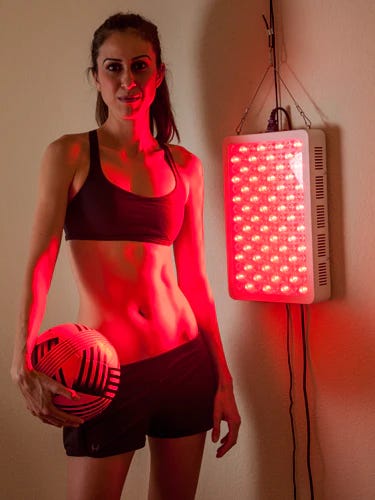
This is not me. I’d love to have those abs. But I do have my box hanging up like this from the back of my bathroom door so that it’s at the right height to target my chest/neck/head. So, how do I know it’s working? I don’t entirely, at least not for the immune function and neurological cellular repair I’m trying to target. However, this therapy also has benefits to the cells of the skin, and within the first few weeks of using it for a few minutes each day, this “thing” I had on the skin of my upper chest went away. My belief is that if it’s achieved some kind of cellular repair of my skin, perhaps it is doing me some good on a deeper level. If nothing else, it’s apparently good for anti-aging of the skin and for hair growth. I listen to YouTube recovery stories and meditations while I do it so that I’m in a good frame of mind.
If you want to purchase a red light box from Red Therapy Co., you can use my referral link to get $50 off. I’ll get 50 clams too. Yay!
A word to the wise: the research on how this light affects eye health is not conclusive yet, so I bought a special pair of sunglasses on Amazon that are darker than the pair that Red Therapy Co. sent me and I make sure to wear them every time and keep my eyes closed. The light can only penetrate skin if you sit within six inches of it, so when I face the box, I make sure I’m a foot or more away from it with my eyes closed and glasses on. When I turn around to shine it on my brain stem, I sit much closer. This is all outlined in Whitten’s book.
That’s a wrap on this second edition of Recovery Tools. Look for the next one in a few weeks, depending on my spoons.
Now stick around for…
🥳 The After-party 🥳
Announcements, links to articles and studies, recommendations and shout-outs, and miscellany joy and/or tomfoolery.
🤯 BIG news this week! Researchers have found the dial in the brain that controls the immune system. This article in Nature even mentions this finding potentially being the key to Long COVID and other post-viral illnesses (ME/CFS is after all known as a neuroimmune disease). For a terrific breakdown of the research, check out this post by
:💊 More research on the favorable C-19 antiviral effects of metformin.
👂🏻 I have been working with a registered dietitian for over a month now and it has been hugely beneficial to my gut health. Came across this podcast with dietitian Lily Spechler who herself had Long COVID and it was extremely eye-opening. Check it out:
🐓 From our pals at The Sick Times: Bird flu is spreading through U.S. farms. What are the risks to people? And here’s a related piece: FDA Says Dairy Products Like Cottage Cheese Are Safe.
🏳️🌈 Some important LGBTQIA2S+ health news and info:
The grim reality of relocating to get access to gender-affirming care
Breaking Down Barriers to Healthcare for the LGBTQ+ Community: A Practitioner’s Perspective.
This is horrifying: 39% of LGBTQ+ young people seriously considered attempting suicide in the past year — including 46% of transgender and nonbinary young people. LGBTQ+ youth of color reported higher rates than White peers. Read about these devastating findings and others in The Trevor Project 2024 U.S. National Survey on the Mental Health of LGBTQ+ Young People.
We end on a bit of hard-won good news: State health care plans can't exclude gender-affirming surgeries, court rules.
🤦🏽♂️ Buffoon of the week: You could have probably guessed this one. Psychopath MAGAt Kristi Noem, who bragged in her memoir about killing an ‘untrainable’ puppy. When children and youth do this, we worry about the risks of them becoming serial killers, but this one gets to govern a whole state. Hillary reposted this for the win:
🏆 Winners of the week: Longtime ME/CFS champion and postviral advocate Jaime Seltzer was named to the Time100 Health. Also named to this list: Dr. Ziyad Al-Aly, clinical epidemiologist and Long COVID advocate. Congratulations, Jaime and Dr. Al-Aly!
🐈⬛ 💩 And finally, it’s this week’s Cat Dump. Birdie’s photo shoot.
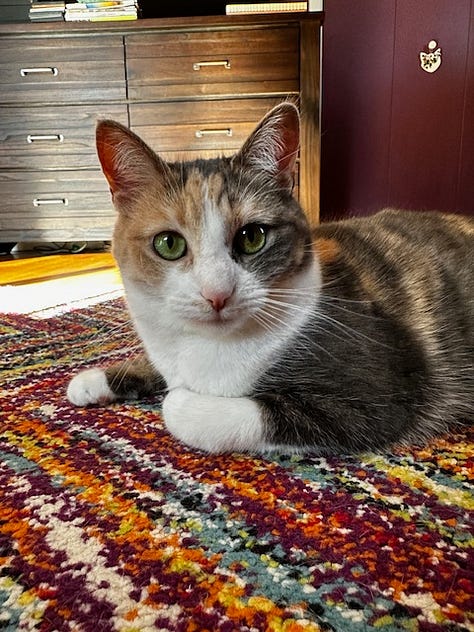
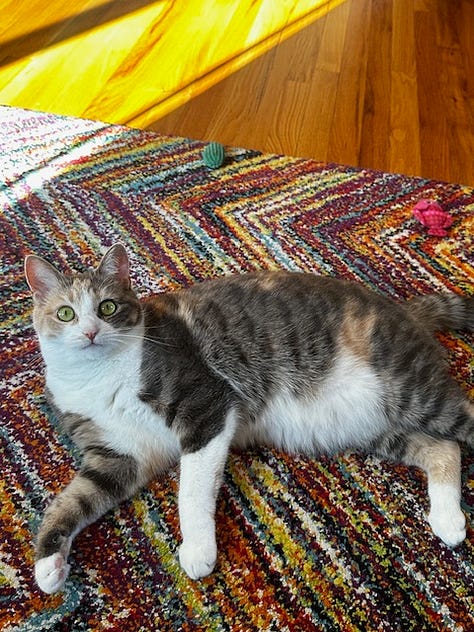
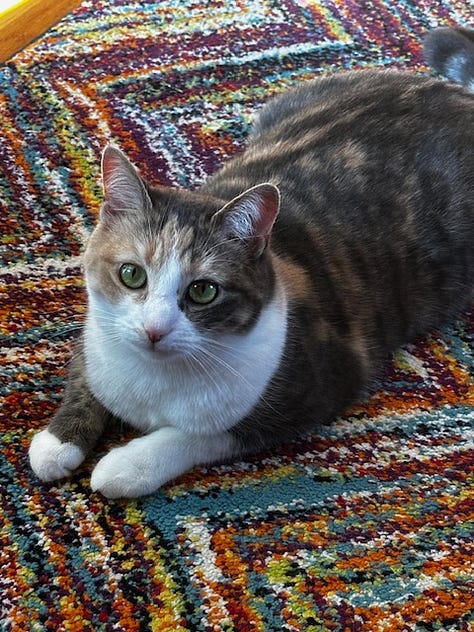




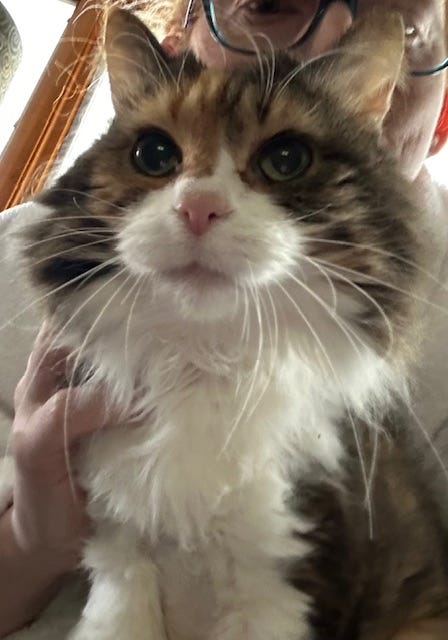




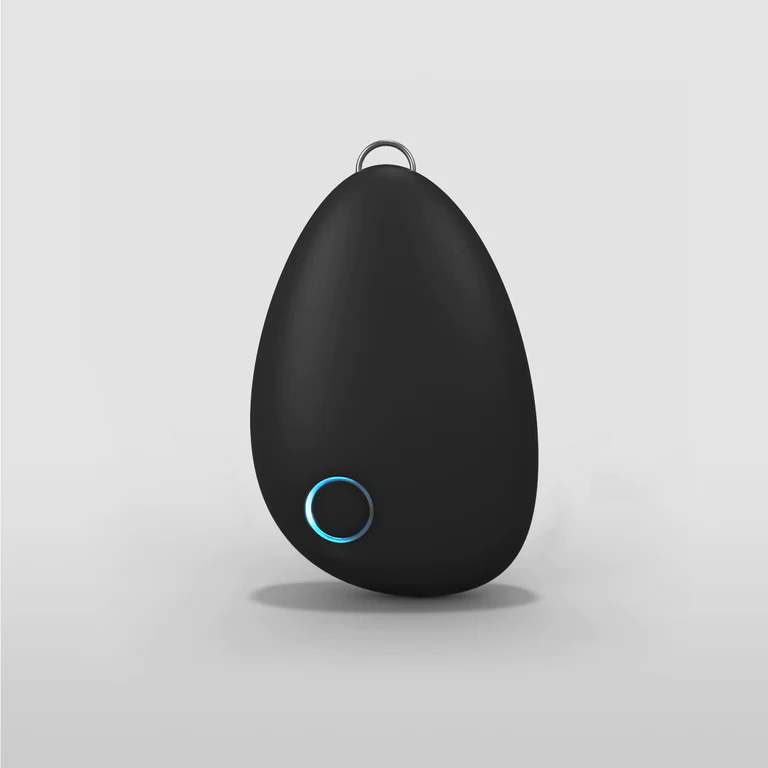
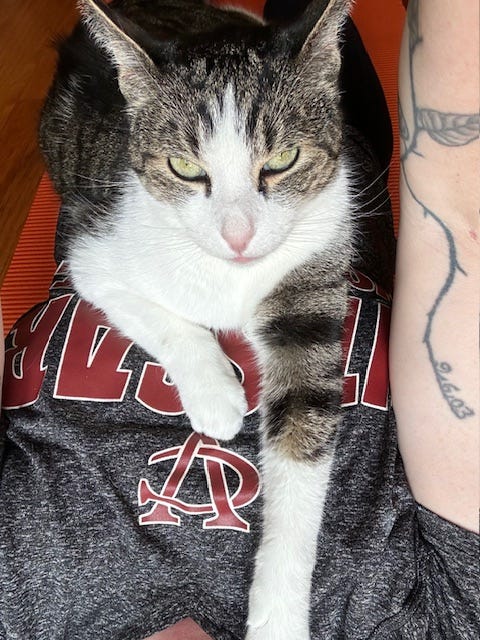




Thanks for sharing all these resources!
One thing I found really interesting was that people with Long Covid or ME/CFS sometimes cannot tolerate listening to spoken words, audio, etc. I have a much lower tolerance for being able to listen and focus during long conversations or to extended audio in the last few years. (Especially if the volume is high. I do much better wearing Loop earplugs.) It's one of the stressors that leads to me having a meltdown. Interesting to imagine this all might be connected.
Hello from another LC'er. I found your substack from your comment on someone elses. Like the content and will be back to read more (I have screen issues from LC so can't stare at a laptop for too long - yay me).
Question about Sensate. I've been thinking about buying one of these kind of devices to help calm my nervous system down, but I don't want to deal with another app. Do you find there are benefits to using this w/out the app (just the vibrations) or do you need the app and sounds to get the full benefit.